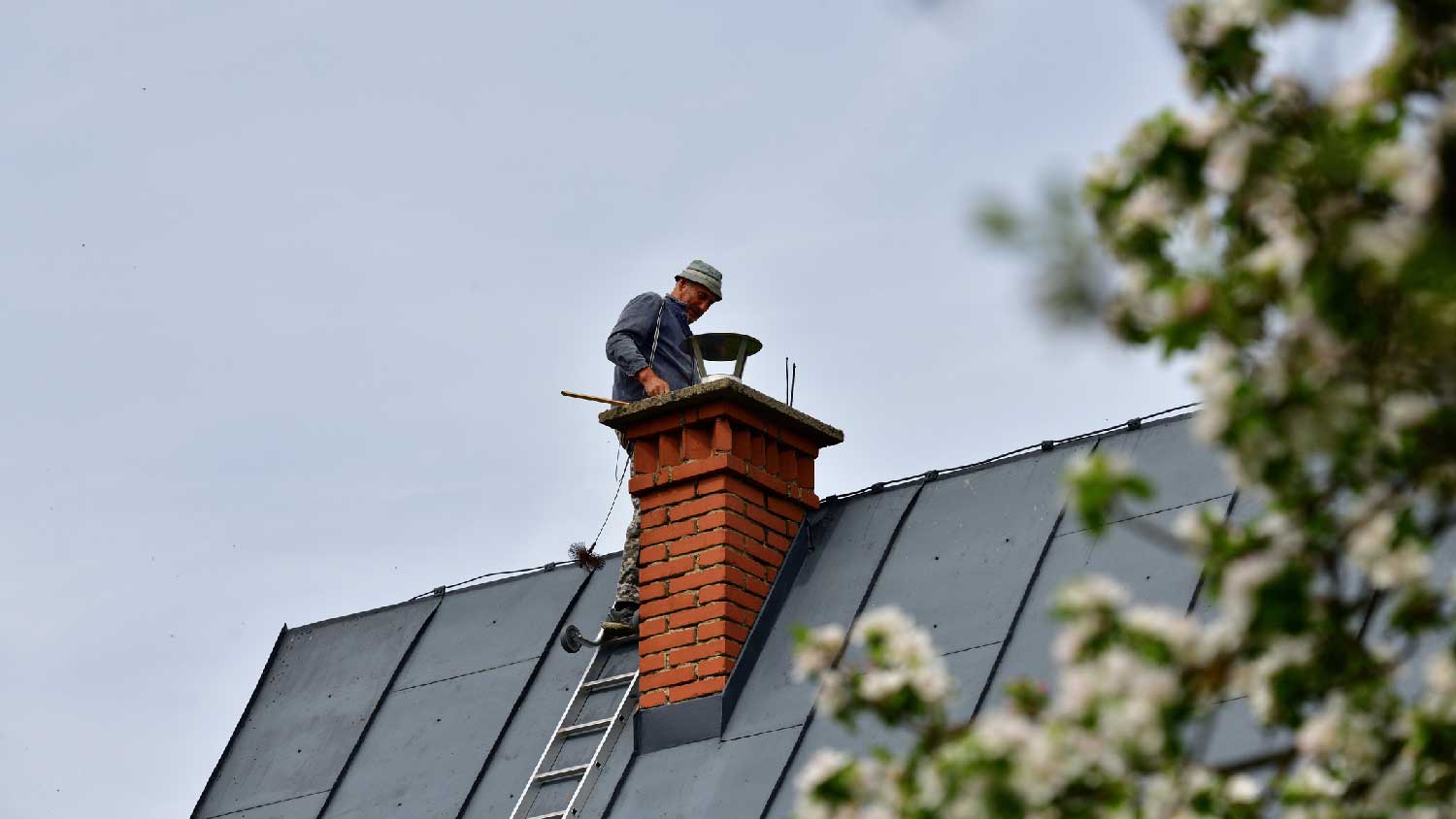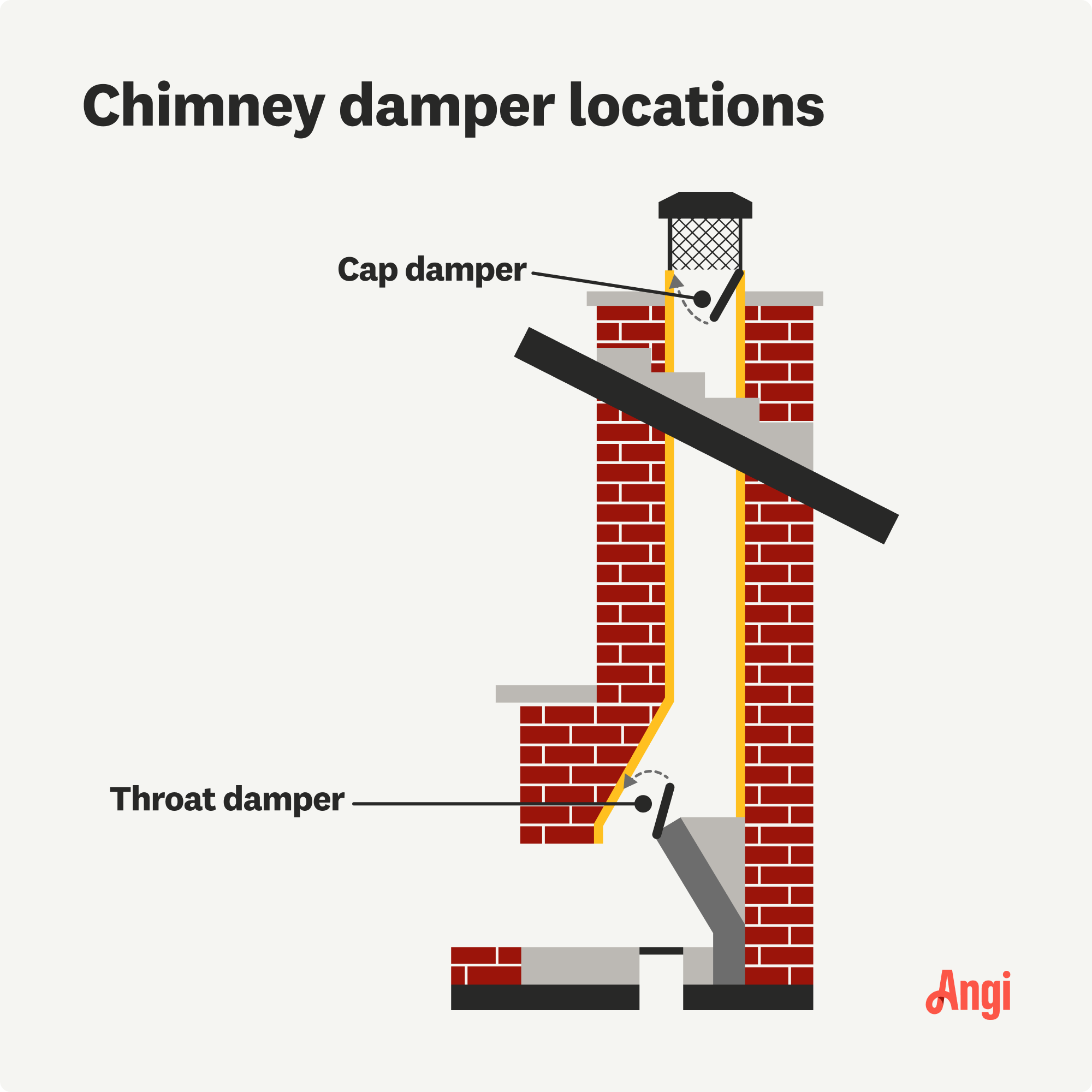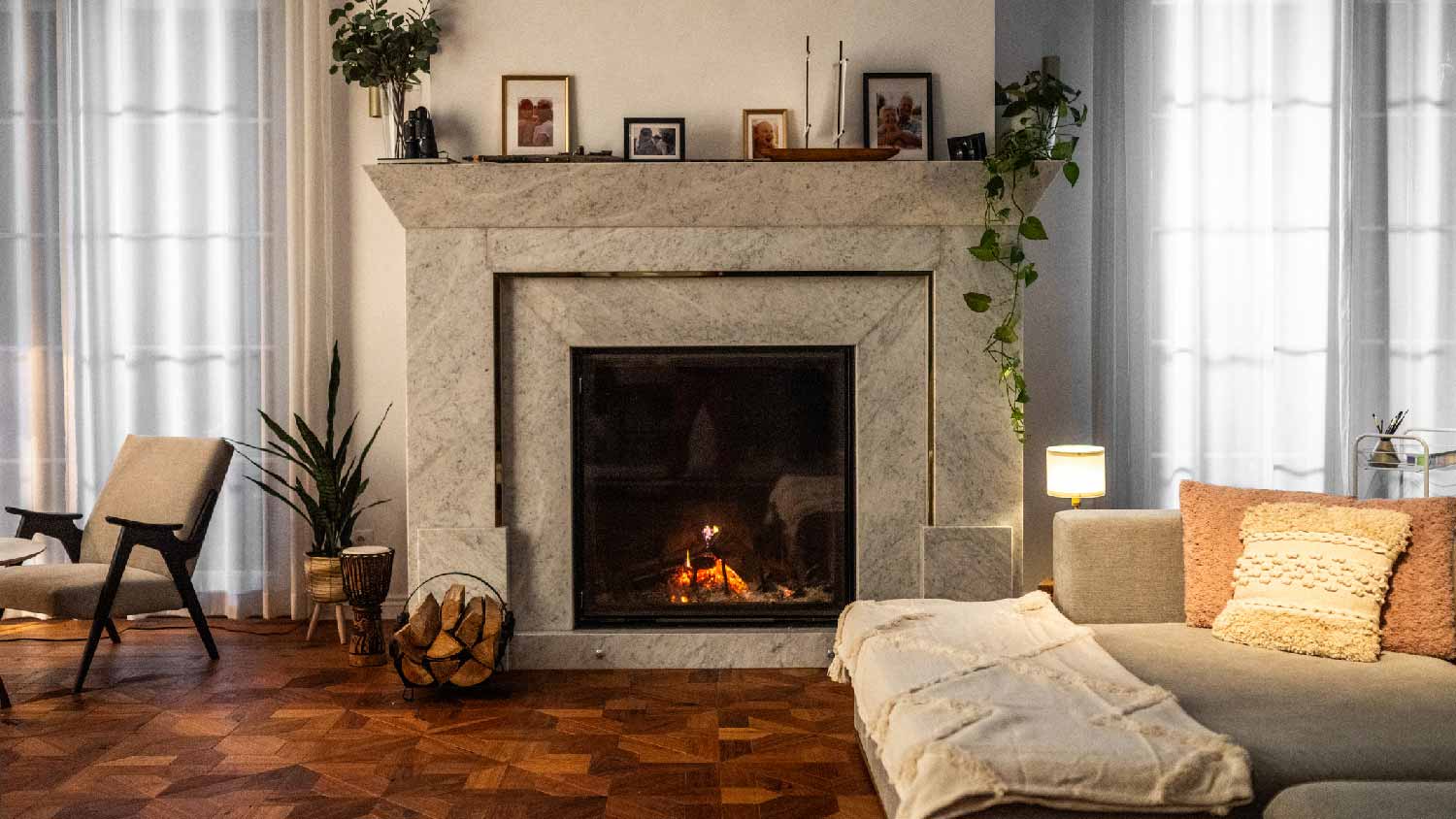
Notice leaks and corrosion around your chimney? You might need new flashing or some careful repairs. Here are some common chimney flashing repair costs.
Frosty fireplace? These six tips bring back the sizzle.


The whole point of a fireplace is to keep your home warm (and, okay, maybe to offer some cozy atmospheric crackles), so it can be a major bummer when you’re feeling a draft instead. Fortunately, there are ways to keep your fireplace from getting frosty, even in the coldest depths of winter. Better yet, plenty of the methods you can use to stop drafts from your fireplace are easy to do—and a few of them won’t even hurt your wallet.
You might have already thought of this, but it bears repeating: Figuring out where the fireplace draft is coming from can go a long way toward helping you learn how to stop it. Look for clear visual signs of wear and tear, such as gaps or cracks in or around the hearth, and look up into the chimney to ensure it’s clear of debris like twigs or leaves. (You’ll need a flashlight and an open damper for this.)
A visual inspection can reveal a lot, but if you want the most efficient (and least dirty) experience, a fireplace repair pro near you can help. They can also perform regular fireplace maintenance that can reduce the risk of drafts before they even happen.

A common cause of fireplace drafts? Gaps in the chimney. If you have a masonry chimney, take a look at the places between each individual brick. If you see any gaps, call a pro to fill them with fire-resistant mortar.
It’s also a good idea to take a look at the chimney cap. This can be dangerous if you don’t know what you’re doing since it requires getting on your roof. A pro can check if it’s secure and doing its job of preventing debris, downdrafts, or even animals from entering your flue. If it’s not, the pro will tell you that replacing it could make a big difference.
A relatively simple and cost-effective way to improve the insulation of your chimney is to install a chimney liner. Chimney liner installation costs range from $1,200 to $2,500 or more with professional installation. Even that price point is less costly than totally refurbishing an older fireplace and chimney, which might even involve removing your fireplace and building a new one all over again. (Of course, you could also opt for both tactics together for the best possible fireplace draft prevention.)
A chimney balloon or fireplace plug is another relatively low-cost, low-effort way to add some major draft-blocking potential to your setup.
As its name suggests, a chimney balloon is an inflatable device that you can put into your chimney in order to block downdrafts. You can purchase one for less than $50. Fireplace plugs are just as affordable and perform the same function, just without the inflatable part.
However, if you choose this method, be sure to remember to remove the chimney balloon or fireplace plug each time you use your fireplace. Otherwise, smoke and soot could blow into your living space or cause an uncontrolled fire.

Your chimney’s damper is the part of the fireplace specifically designed to control the flow of air into and out of the chimney. If you’re experiencing a brisk breeze when you stand in front of your fireplace, it could be as simple as the damper being open. If that’s the case, when you look into your chimney, you’re likely to see daylight streaming in.
To close your damper, pull down on a chain, handle, or lever. However, if your damper is closed and you’re still feeling a draft, call in a repair pro to see if it needs to be replaced.
Pro Tip: A top-sealing damper is the most efficient when it comes to preventing fireplace drafts.

If you simply can’t find a way to reduce the draft—and you’re open to a minor design change—installing fireplace doors can be a fast and affordable way to reduce the breeze coming from your chimney.
Depending on the specific model you choose (and whether or not you hire a professional to install them), glass fireplace doors can cost as little as $180. As an added bonus, they don’t just reduce drafts—they can also help keep that mess of ashes in the firebox rather than on your floor. It’s a win-win.
From average costs to expert advice, get all the answers you need to get your job done.

Notice leaks and corrosion around your chimney? You might need new flashing or some careful repairs. Here are some common chimney flashing repair costs.

Chimney repair costs can vary by the type of chimney you have and the required repairs. Use this guide to help you estimate project costs.

Replacing your chimney increases home value and prevents hazardous structural damage. Learn how much to budget for chimney replacement costs.

The chimney is an essential but easy-to-overlook decision when building or renovating a house. Here are the pros and cons of the main types of chimneys.

If you own a fireplace, learning how to open and close your chimney flue ensures you allow smoke out of your home when it’s in use and stay warm when it’s not.

Homeowners should know how to remove creosote from chimney flue, but it’s safer to leave this hazardous task to a professional chimney cleaner.